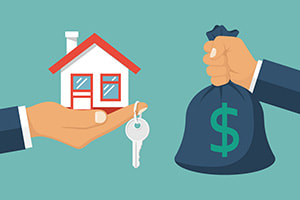 Many things affect mortgage rates, such as your credit score, your debt-to-income ratio, and the location of your property. One thing not a lot of people have to think about is occupancy type—but this will significantly affect rates. So what is occupancy type? Occupancy type is how you use a property. There are three types: Principal residence. This is the home where you live most of the time. For mortgage purposes, this is the home where you spend most of each year, and it is also the address listed on your federal and state tax returns. Second home. This is a property you occupy for part of the time. In most cases, this means a vacation home—a cabin by the lake or a house on the beach. If your job requires you to split your time between two locations and you decide to buy a house in the second location, this would also be a second home. Investment property. This is a property you purchased with the intention of generating income. Be aware that a primary residence can turn into an investment property if, for example, you build a tiny house in the yard and rent it out. Flipping a house also makes it an investment property. If you have a vacation home that you occupy for a few weeks and then rent out the rest of the time, that also becomes an investment property. Why Do Mortgage Rates Change by Occupancy Type? Lenders give different rates because they consider these occupancy types to have different risk levels. Let’s say you own a house you live in and a duplex you’re renting out. If things change, which mortgage will you stop paying first? Lenders consider second homes riskier than principal residences and investment properties riskier than both. The riskier the home, the higher down payment or credit score your lender might require from you. Be Transparent with the Lender About the Property Use It’s illegal to intentionally misrepresent the intended use of a property. This can result in hefty fines and put you in default of your loan agreements. Some mortgage companies randomly inspect second homes to make sure they aren’t being rented out. The IRS considers your second home a residence if you use it for at least 14 days per year or 10% of the days you rent it out, whichever is greater, although your lender might have stricter rules. What if you retire and decide to move to that beach house and rent out your primary residence? You can always change the occupancy status as long as you have had the mortgage for about a year, even if it’s not paid off yet. If you are considering buying a second home or an investment property, you should understand how this can affect your mortgage. It’s also important to be transparent with your lender about the purpose of the property and to work with them to get the loan you need. Are you considering buying or selling a property? I have answers for all your real estate-related questions. Contact me today.
0 Comments
 Mortgage rates are up and expected to keep climbing; this might lead to moderation in demand from homebuyers and a slight slowdown of home price growth. Despite this, economists with Freddie Mac believe the single-family housing market should remain stable throughout the year. According to Freddie Mac Chief Economist Sam Khater, "The combination of a large number of entry-level homebuyers facing a shortage of entry-level inventory of homes for sale should keep the housing market competitive." Home sales are expected to reach 6.9 million by the end of the year and climb to 7 million in 2023. Mortgage Moves The average 30-year fixed-rate mortgage (FRM) has climbed to just below 4%; the highest it's been since May 2019. In comparison, in 2021, the 30-year FRM was averaging just 3%. With rising mortgage rates, home price growth is expected to slow. In 2021, house price growth was 15.9%; this is forecasted to drop to 6.2% in 2022 and to 2.5% in 2023. Housing Affordability Rising mortgage rates directly impact home affordability. Monthly mortgage payments consist of a combination of principal loan amounts, taxes, insurance, and interest. The higher the interest rate, the higher a homeowner's monthly payments. As such, an increase in mortgage rates can hit the monthly budget of homeowners, as well as decrease the amount of house a homebuyer can afford. Talk to an Expert While it is always wise to keep an eye on mortgage rates, the fear of fluctuating rates shouldn't stand in the way of your dreams of home ownership. Talk to the experts. Understand your finances so you know what you can afford and so that you can make an informed decision on the purchase of a new home that fits within your budget.  Three sales regions in the country reported monthly gains in home sales, while sales remained steady in the fourth region. Yet when comparing year-over-year sales, only one region saw an increase in home sales, while the other three recorded sales decreases. There was more unity across the country when comparing existing-home prices, however, as every region saw price gains. Median home prices were up 13.9% in November from a year earlier, reaching $310,800. This marked the 117th month in a row of year-over-year price increases—a new record. Yet this record might come to an end in 2022. According to Lawrence Yun, chief economist for the National Association of Realtors, both inflation and the pace of price appreciation is expected to slow over the coming year. This view was echoed by economists and housing experts at the NAR Real Estate Forecast Summit; the consensus prediction was that inflation would ease at a 4% rate, while home prices in 2022 would rise at a more moderate pace of 5.7%. Rising Mortgage Rates Yun believes recent buyers have been driven by a forecasted rise in mortgage rates. “Locking in a constant and firm mortgage payment motivated many consumers who grew weary of escalating rents over the last year.” While mortgage rates are expected to climb in the coming months, the increase is expected to be manageable. Yun expects the 30-year fixed mortgage rate to average 3.7% by the end of 2022, with the average commitment rate for the year hitting 3.11%. Inventory of Unsold Homes Down Again The consistent lack of supply that has hindered the housing market for years saw no improvement in November, with total housing inventory reaching 1.11 million units. This was down 9.8% from a month earlier and 13.3% from a year earlier, when there were 1.28 million homes on the market. At the current sales pace, November’s housing inventory would supply the market for just 2.1 months, a lower inventory than at the same time a month and year ago. “Supply-chain disruptions for building new homes and labor shortages have hindered bringing more inventory to the market,” according to Yun. The low levels of supply were a contributing factor to November’s record-setting home prices. Houses Selling Quickly Fewer first-time buyers were able to gain a foothold in the housing market in November; this group accounted for just 26% of all home purchases, down from 32% a year earlier. According to the NAR “2021 Profile of Home Buyers and Sellers,” the annual share of first-time buyers in 2021 was 34%. All-cash sales, meanwhile, were up, accounting for 24% of all purchases; in comparison, 20% of all transactions were all-cash in November 2020. The average property stayed on the market for just 18 days, three days less than a year earlier. Of all the homes sold in November 2021, 83% were available for less than one month. Regional Breakdown Northeast - Existing-home sales annual rate of 760,000; unchanged from October 2021 and a decrease of 11.6% from November 2020. The median sales price of $372,500 increased 4.7% from November 2020. Midwest - Existing-home sales annual rate of 1.52 million; an increase of 0.7% from October 2021 but a decrease of 0.7% from November 2020. The median sales price of $260,100 increased 9% from November 2020. South - Existing-home sales annual rate of 2.85 million; an increase of 2.9% from October 2021 and 1.1% from November 2020. The median sales price of $318,900 increased 18.4% from November 2020. West - Existing-home sales annual rate of 1.33 million; an increase of 2.3% from October 2021 but a decrease of 3.6% from November 2020. The median sales price of $507,200 increased 8.4% from November 2020. It’s always a great idea to prepare your home before selling it. Putting in the effort to make your home feel warm and welcoming is worth it if you want to sell your home quickly. Make potential buyers feel right at home with these five tips.
1. Stage It to Sell A decade ago it was mostly upper-end sellers who staged their homes for sale. Now it’s expected of every homeowner to remove distractions such as knickknacks and personal photographs so that buyers can imagine their family living in the home. However, be careful not to overdo the depersonalization. Too much of a minimalist look can be off-putting if the home is left with no sense of anyone living there. Let buyers see all the space that is available while still leaving some of the personal touches that keep things feeling comfortable and snug. 2. Go Squeaky Clean Before you list, it is a good idea to hire a cleaning service. Have them really scour the place, top to bottom, until it gleams. Evidence suggests that buyers are far more likely to purchase a home that is immaculately clean than one that feels a little shabby around the edges. 3. Give a Warm Reception When getting ready for buyers, make sure your home isn’t too hot, too cold, or too stuffy. An ambient 60 to 68 degrees Fahrenheit is best for making your buyers feel comfortable. 4. Create a Pleasant-Smelling Home Offensive odors are the single biggest turnoff for would-be buyers. Don’t attempt to mask them with air freshener; fix the problem at the source. Air out the house, wash trash cans, and clean upholstery to eliminate pet and smoking smells. When your home is odor-neutral, try introducing pleasant smells that give off a homey aroma. While it might be impractical to bake cookies for every viewer who visits your home, you could light some candles or brew some fresh coffee. 5. Introduce the Neighborhood Buyers typically want to learn about the neighborhood, so provide information in the listing about nearby schools, transport links, dining, shopping, and recreation areas. Remember, you’re marketing a lifestyle as well as a home, so remember to show off the neighborhood in its best light. Please contact me if you’re interested in more tips for getting your home ready to sell. I can help you prep to get the best possible price for your home.  Starting a new year is the perfect time to review finances and set goals. Here are seven financial wellness tips to consider in the new year. Pay Off High Interest Debt Binging on Black Friday deals or charging gifts to credit may be fun over the holidays, but the expensive credit card bills that show up in January are not. Get your finances in order by making a plan to pay off high-interest debt. Tax-Advantaged Savings Participating in your company’s 401(k) plan or opening an IRA can lower your taxes now and improve your retirement later. If you already have a 401(k), consider increasing your contribution. Consider an FSA If you have predictable health care expenses or plan to spend more in the year to come, a flexible spending account will benefit you by lowering your tax bill. Open an HSA If you have a high-deductible health plan, you’re eligible to open a health savings account. HSAs provide upfront tax breaks, as well as long-term tax-free growth and tax-free withdrawals for allowable health care expenses. Find the Best Interest Rate You work hard for your money, and your money should return the favor. Shop around for a higher interest rate on your savings account. Monitor Your Credit Look over your credit report for errors and review your credit score. Your credit profile will impact the interest rate you pay on loans, and improving your score could save you money. Review Beneficiary Designations If years have passed since you set up your retirement account, your beneficiary designations may be outdated. Marriages, divorces, and other life events impact the choice of beneficiary, so review your documents and make sure everything is current.  Phishing remains one of the most significant cyber threats and hits everyone from individuals to Google and Facebook. It’s common because it’s lucrative; in 2020, it cost individuals and businesses about $4.2 billion. Most phishing attacks are aimed at massive numbers of emails with the hope of catching a few, but a variant, spear phishing, targets specific companies. So, how can you not get phished? Don’t Click On Links in Unsolicited Emails Emails that claim to come from your bank, PayPal, or another financial provider are suspect. Even if you are completely sure the email does come from that sender, always use an existing bookmark or type in the URL to make sure you are accessing an official website. One of the most common phishing tactics is to pretend to be the victim’s bank in order to get their login credentials and/or credit card number. These emails are often not personalized, while legitimate emails are. Avoid Accepting Friend Requests from Total Strangers Many phishers have switched from email to social media or mobile channels. If you get a message with a link in it, read it carefully before clicking. Make sure the person sending the request is somebody you know and is a legitimate account; look at what they post publicly, etc. Never Send Financial Information via Email Although some legitimate companies, especially in Europe, will ask for your credit card through email, never send it. Call them up instead. Either call them or arrange a specific time for them to call you before handing over the number. Emails Claiming Taxes Are Owed Are Very Suspect Be aware that government agencies and other companies generally don’t use email (or phone) for collections. Most will always send snail mail first. Don’t Use Your Debit Card to Make Online Purchases If a criminal gets your debit card, they have a direct line to your bank account, and it may be difficult to recover the stolen funds. If you want to protect yourself and your money, save your debit card for cash withdrawals and use your credit card for shopping. Credit Cards Provide Protection When Shopping Online Your credit card company will often flag a fraudulent charge and contact you within minutes. You can report the theft immediately and there is generally no risk of loss. Phishing scams and identity theft are problems that are not going away any time soon. Keep an eye on your mail and shred any important documents before throwing them in the trash. Be wary of phone calls and emails asking for personal information, even if they seem to come from a trusted company. Being an educated and proactive consumer is the best way to protect yourself and your finances.  Multigenerational living continues to gain popularity, fueled in part by the pandemic. Families looking for larger homes to accommodate multigenerational living is at a nine-year high of 15%, according to data from the National Association of Realtors. The largest share of these homebuyers are people looking for a home that’s ideal for them and their aging parents. This trend gives home sellers an opportunity to showcase features such as finished walkout basements and bonus bedrooms. Intergenerational living is far easier when each family’s subunit has its own space. Play Up Safety and Accessibility Features Before you put your home on the market, take a look at its accessibility for people who use wheelchairs or walkers. Bathrooms and outdoor spaces should have added safety features as well. A complete, accessible living space on one level means extra value for homebuyers, and they’ll appreciate that you put some thought into how an intergenerational family might use the home. Create Equity Through Home Improvement Projects Homebuyers considering the multigenerational living style usually pool their money so they can afford to buy bigger and better homes. Often, they buy houses that can accommodate their arrangements immediately, so sellers who remodel to add a kitchenette or two complete master suites will realize a big equity return on these home improvement projects. Home sellers should look at their homes from a different angle and consider how a multigenerational family might use the various spaces. The trend toward living together under one roof will continue to rise in the future.  When you accept a buyer’s offer, your real estate transaction enters escrow—the period between contract and closing. During escrow, a neutral stakeholder holds the buyer’s cash and the seller’s deed while the buyer and seller fulfill the conditions of the contract. When the contract contingencies are satisfied, the mortgage is in place, and the title is certified, the escrow agent will date the deed, send the purchase money to the seller, and close the sale. This usually takes around 30 to 40 days. While most escrows are trouble-free, around one in five will experience setbacks. Here’s how to ensure yours stays on track and your home sale closes. 1. Eliminate Repair Surprises Most home sale contracts contain a home inspection contingency that gives the buyer 10-15 days to have the home inspected. Depending on the terms of the contract, if the buyers are not satisfied with the inspection results, they can cancel the contract or try to negotiate a discounted selling price. Taking the preemptive action to get a seller’s pre-inspection means that you can fix the problems upfront that could delay the escrow closing later. 2. Screen the Buyer While there are unpreventable circumstances—such as a sudden job loss—that could delay or stop a buyer’s financing, most issues can be prevented by thoroughly screening the buyer. Ask your agent to call the buyer’s mortgage provider directly to verify their preapproval documents and confirm that the lender has reviewed the buyer’s credit reports. The buyer should be able to prove that they have the necessary funds for the down payment so they don’t come up short at closing. 3. Review the Title Title problems are very unusual with newer homes. Problems typically occur with homes that have been in the family for several generations. If you are selling such a home, it’s worth hiring a title company to review the title. Title problems can take many months to resolve, often requiring a fresh deed or even a court order to correct. If you leave the title problems until escrow, there is a chance that you could lose your sale. 4. Double-Check Every Document Document problems, such as misspelled names or an incorrect loan amount, can cause serious delays, as the documents have to be redrafted, reprinted, and re-signed. Ask to see every piece of paperwork as far in advance as you can. Pay particular attention to numbers, prices, down payment amounts, and personal information. 5. Move Out Carefully Right before closing, the buyer will conduct a final walk-through to make sure the home is in a reasonable condition. Leaving piles of trash in the kitchen or gouging a hole in the wall as you remove the furniture is a surefire way of extending escrow, as the buyer will expect these problems to be fixed before closing. Don’t wait until the last minute to sort out any issues. Get them resolved beforehand so you can be on your way to a stress-free, straight-sailing escrow.  Buying a fixer-upper may seem appealing since the price point is usually much less than a newly remodeled home—and you can remodel it into your dream home. But sometimes the cost of repairs outweighs the initial savings, and fixing the home requires much more work than anticipated. Before buying a fixer-upper consider these points: Do You Have the Skill? Many people buy a fixer-upper with the intention to renovate it themselves. Unfortunately, most find that they are not as skilled as they imagined. If you are not an experienced DIYer, you may need to hire a professional to get good results. Do You Have the Patience? There are drawbacks during the remodeling process, especially if you plan to move in immediately. Dust, noise, and unfinished rooms can make the living space uncomfortable. If you work from home, expect frequent interruptions by contractors and power tools. You may need to go without your kitchen or a bathroom while they’re being finished. Can You Wait to Move In? When most people buy a home, they want to move in as quickly as possible—perhaps they’ve just sold their previous home or their lease is about to expire. But major repairs can mean waiting weeks or months to move into a house. If you are able to wait an extra month or two while renovations are being made, then buying a fixer-upper won’t be too inconvenient for you. Can You Afford Repairs? Renovating a home can be expensive. Weigh the amount of money you’ll spend on labor and materials versus the return on investment. Remember, remodeling projects often go over budget. After you have calculated the costs of the renovations, add 20% more to make sure it’s in your price range Will It Increase the Value? Houses that need major fixes might not be worth renovating. If something essential such as plumbing needs to be replaced, it won’t necessarily increase the home’s value. Remember, too many improvements can mean you won’t get back the money you invested. Always plan your renovations according to the price of other homes in the neighborhood. If you are experienced with remodeling or can afford to pay professionals, buying a fixer-upper can be a good investment. But if you dislike dust and noise and need to move in immediately, then a turnkey home is a better option.  When it comes to getting a home loan, three of the most dreaded letters are PMI. Those three seemingly harmless letters stand for private mortgage insurance, and borrowers have been conditioned to be wary of it. PMI is a lender’s way of reducing its risk on mortgages that are secured with less than a 20% down payment. The cost is an annual premium that’s typically 0.5% to 1% of the entire loan amount on an annual basis. PMI has become something homebuyers mostly try to avoid because they’ve been told that having it is like throwing money away each month. Consider these points. PMI Gives More People the Opportunity to Be Homeowners Putting down a large down payment does save money on interest over time, but most buyers will not be able to put down 20% on a home, especially since home prices keep rising. PMI gives buyers who don’t have a large chunk of cash savings a way to get a mortgage and start gaining equity in their home. PMI Can Be Canceled When Your Home Equity Is Over 20% PMI can be canceled when the borrower has 80% equity in the home, the way they would have if 20% had been put down. However, PMI is not automatically canceled, and the buyer should be aware that they’ll need to write their lender a letter requesting cancellation. Can You Afford PMI? Lenders typically require that a borrower’s monthly debts not exceed 33% of monthly income. If the added cost of PMI pushes you over your monthly budget, you’ll need to shop for a less expensive home or postpone homebuying until your financial situation improves. Affordability is a fair objection to PMI, since it adds a monthly expense to a homebuyer’s budget. But as long as the borrower can afford it—and remembers to cancel it when they get to 80% equity—then PMI is a good tool to help more buyers become homeowners. |
AuthorA variety of pertinent real estate topics and tips from various authors and contributors. Archives
December 2024
Categorieshow much home can i afford?*
|



